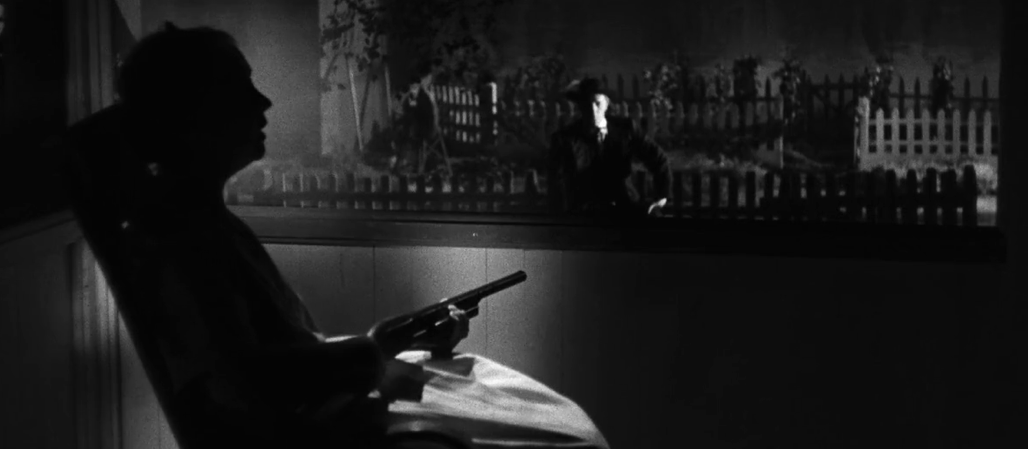
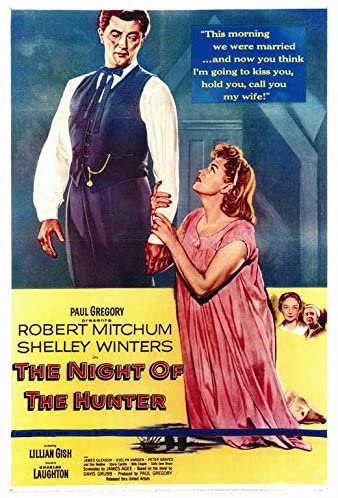
“Down there in the deep place with her hair waving soft and lazy like meadow grass under floodwater and that slit in her throat like she had an extra mouth.”
On March 18, 1932, Harry Powers was hanged by the neck until dead for the murder of two women and three children. His modus operandi was to prey on wealthy widows through lonely hearts ads, endearing himself to them, convincing them to withdraw their money from the bank, then discarding their mangled corpses. The children were collateral damage. Incidentally, his birth name was—I kid you not—“Harm.” In 1953, Davis Grubb wrote a bestselling novel with a villain based on Powers, a psychopathic minister-cum-serial killer whose biblically-tinged smooth talking disguised his ruthless motives. Only two years later, decorated actor Charles Laughton made his first and last directorial effort by adapting The Night of the Hunter for the silver screen, producing a bold, intoxicating amalgamation of various film styles from past eras wrapped around a tale of lost innocence and spiritual perseverance.
Consider the context in which The Night of the Hunter was released. By the mid-1950s, the movie industry was in a period of uncertainty. Television had become commonplace in the home and threatened to upset the dominance of the cinema even as talented filmmakers struggled to express themselves within the boundaries of the Hays code. Technological innovations such as 3-D, widescreen, and stereo sound had bolstered the medium’s perceived novelty enough to keep things afloat for a time, but the outlook was not especially rosy.
Enter Charles Laughton, sitting behind the camera for the first and only time in his fruitful career. He decided to forego the use of all of these newfangled technologies in favor of turning back the clocks. His stated aim was to capture the spirit of the silent films he had been studying, among them the German Expressionist works of the 1920s and the earlier epics of D.W. Griffith. When he pitched the role of Miss Cooper to former silent film star and Griffith regular Lillian Gish, he said, “When I first went to the movies, they sat in their seats straight and leaned forward. Now they slump down, with their heads back, and eat candy and popcorn. I want them to sit up straight again.” Though unorthodox, The Night of the Hunter is an undeniable triumph of formal experimentation, mixing various camera tricks, acting styles, genre conventions, and set design techniques from bygone eras. Unfortunately, the scattershot assortment was considered too arthouse for Hollywood. According to producer Paul Gregory, United Artists struggled to market the project because it didn’t fit neatly into any standard genre. “Absolutely no money was spent on promotion. […] United Artists didn’t have the muscle, desire, or intelligence to handle the picture.” Doubly unfortunate was that Laughton took the harsh critical treatment to heart and never directed another film. However, in the decades since its release, its reputation has grown considerably and what was once a cult film is now considered among the greats.
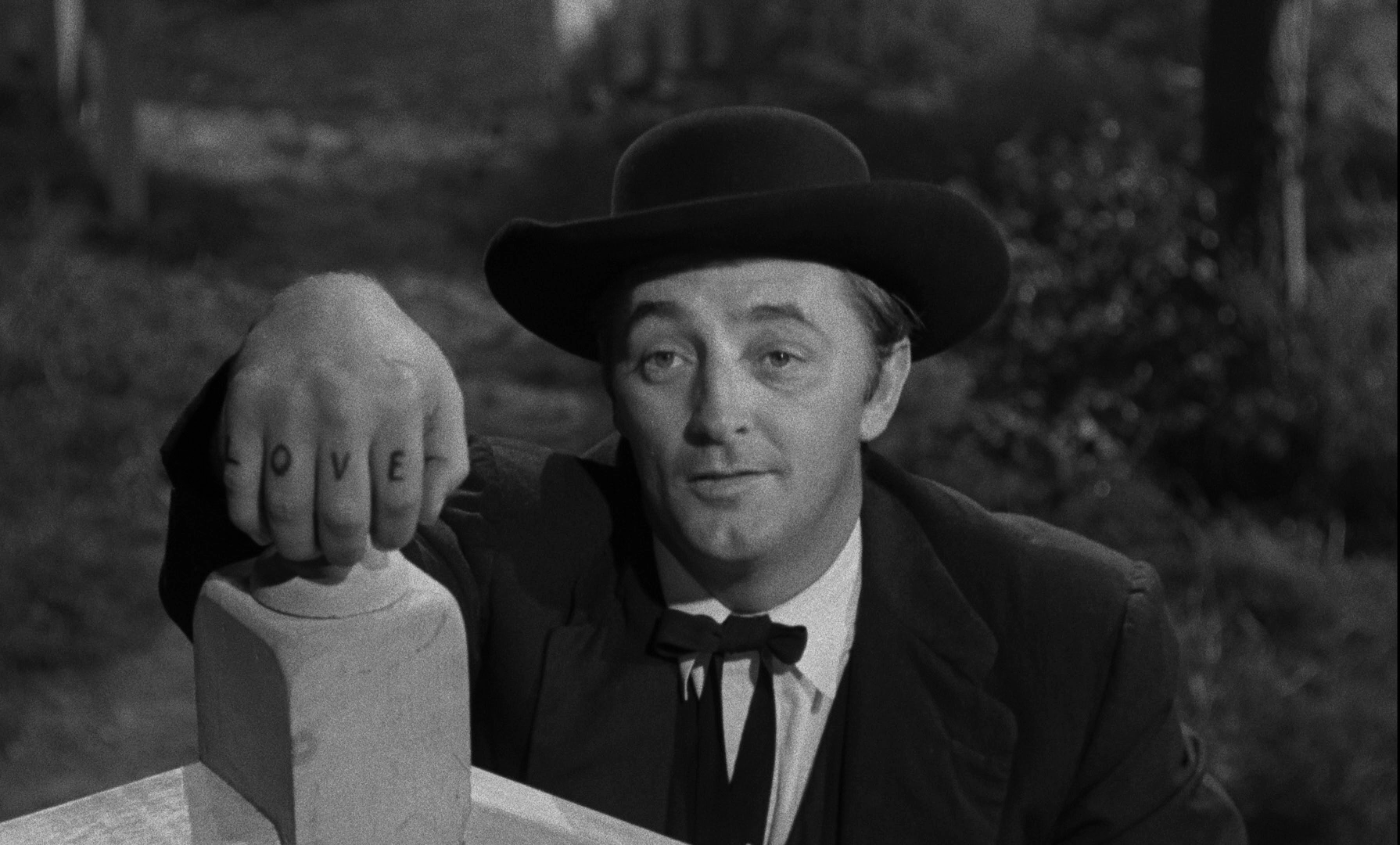
At the center of the tale is the false prophet Harry Powell (Robert Mitchum), a conniving swindler who preys on naiveté and willfully misinterprets scripture to justify his horrid behavior to himself; to fool his conscience into believing his woeful crimes are somehow ordained by God. Alternately preceded by an ominous orchestral swell or Mitchum’s own baritone rendition of ‘Leaning on the Everlasting Arms’, he is by turns aloof and sinister, an unpredictable wolf in sheep’s clothing. He makes his righteous case to his prison bunkmate, Ben Harper (Peter Graves), brandishing a switchblade and reciting Jesus’ words in the book of Matthew: “I come not with peace, but with a sword.” But we’ve just seen this “sword” moments earlier, bursting phallically from his pocket as he took in a peepshow. Powell has thus far gotten away with his string of murders—he’s only in the pen for a brief stint for car theft. But Harper is waiting on a hangman after murdering two people and stealing $10,000—a large sum that the authorities have been unable to recover since his arrest.
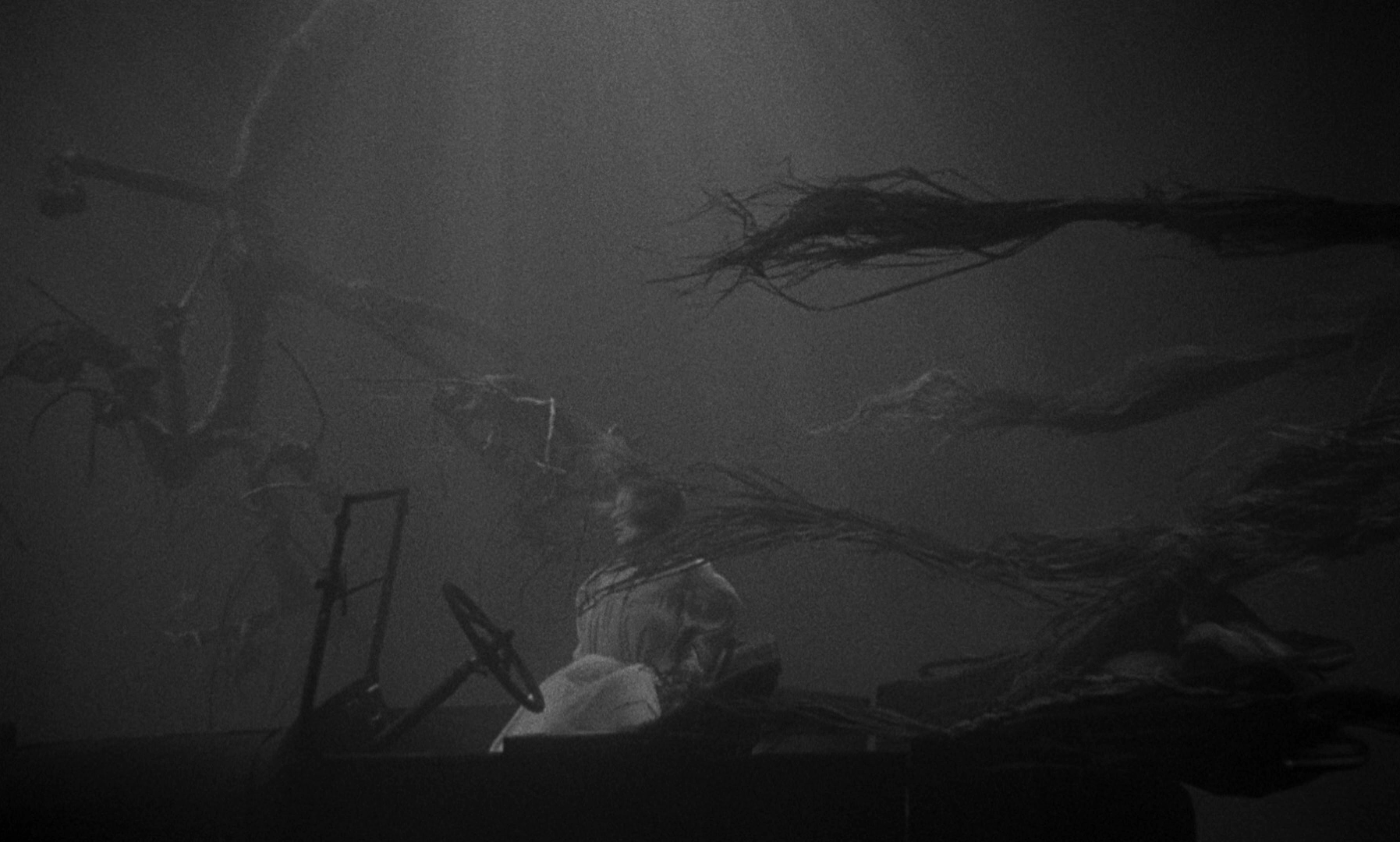
Once released, Powell makes his way to his late cellmate’s hometown, posing as a resigned prison chaplain who’d ministered to Harper in his last days, intending to run his game on the newly widowed Willa (Shelley Winters). With his deep voice, televangelist smarm, and a memorized speech about the eternal struggle between love and hate—words that he has tattooed across his knuckles—he quickly endears himself to the community, convincing them he’s a pious itinerant preacher with a gift for gab and a heart of gold. With the help of an old gossip named Icey (Evelyn Varden), he woos and weds the hanged man’s widow within a few weeks. But, of course, Willa has no idea what her husband did with the money. The only two people who know, aside from the dead man, are his young children, John (Billy Chapin) and Pearl (Sally Jane Bruce), both of whom promised their father that they would not reveal it to anyone. But when Powell’s persuasive abilities fail on the children, he ruthlessly slaughters their mother and sinks her body to the bottom of the river. Neither of the children witness the murder, but John does not believe that his mother has abandoned them, as Powell says, and flees with Pearl on their father’s old river skiff.
If the character of Harry Powell is transparently evil, the forces of good are just as clearly concentrated in Rachel Cooper (Lillian Gish), a mother hen type who collects all manner of orphaned or otherwise wayward children along her stretch of the Ohio River, provides them a loving home, and infuses them with positive virtue. It is Miss Cooper who finally has the perceptiveness to call Powell’s bluff, cutting off his love-hate spiel and squarely questioning him to ensure her instincts are correct. She also has the grit to mete out justice at the end of a shotgun when the situation calls for it. She camps out in her living room all night, rocking gently in her chair with the weapon resting in her lap, as if daring the fiend to give her a reason to use it. It is Miss Cooper again who plainly state’s the film’s thesis in its concluding moments. On a snowy Christmas Eve, she considers the spiritual resiliency of her two new charges. “Lord save little children,” she says. “The wind blows and the rain’s cold, yet they abide… they abide and they endure.”
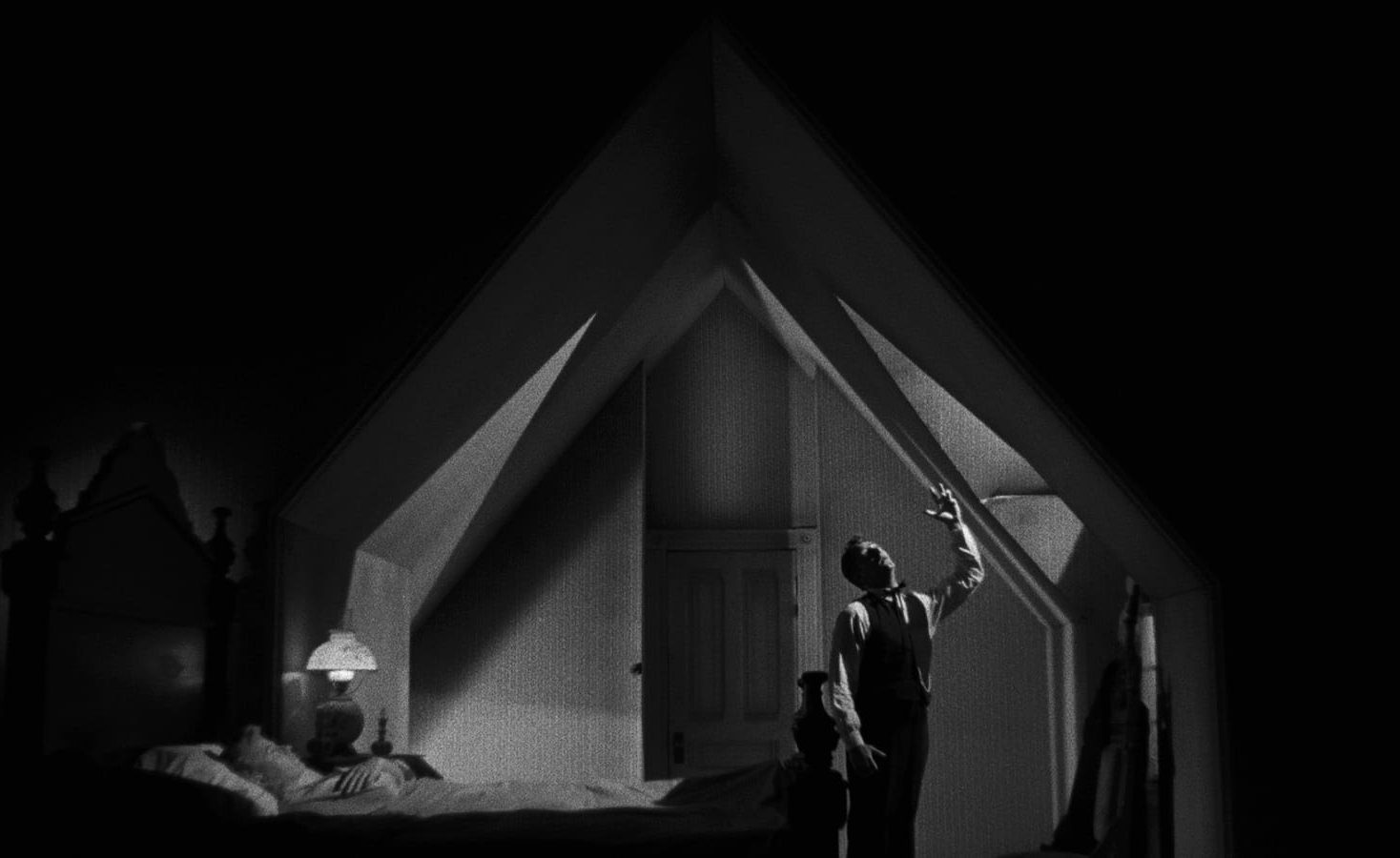
Considered from a certain perspective, The Night of the Hunter is quite demented. Even as the film begins, we bear witness to Powell’s trail of victims, catching a glimpse of a dead woman’s legs when her body is discovered by children playing hide and seek. As he flees the scene, he ostensibly prays, thanking God for providing a steady supply of wealthy widows. He’s lost track of how many it’s been, but he makes sure to remind God that there is a lot of killing in the Bible so his butchery is, if not justified, at least permissible. In other areas it remains just as chilling but takes pains to adhere to the Motion Picture Production Code. To wit, we only see the aftermath of Willa’s murder as Laughton chooses to wipe cut just before Powell’s switchblade catches her neck as she lies on her marriage bed in a halo of light. When Pearl’s new stepdaddy interrogates her for the location of the money, he threatens to tear her arm off, but we only witness this aurally. These creative choices follow the letter of the regulation, but not its spirit, as they are perhaps more unnerving than the oft-stilted violence of the era. And yet this willingness to look at evil unflinchingly prevents the uplifting final act, with its depiction of pure goodness in Miss Cooper, from feeling too sentimental.
While its performances and primal good v. evil storyline are sufficient reasons to make The Night of the Hunter appointment viewing, it’s the beautiful and eccentric visual style that sets it apart. From Powell’s dueling tattoos, to his shadow on the children’s bedroom wall, to the exaggerated cathedral ceiling of the newlyweds’ bedroom, to the silhouette of Miss Cooper with her shotgun keeping vigil, to Uncle Birdie Steptoe (James Gleason) playing banjo while John works on his dad’s old skiff, to the children’s dreamy river journey (recalling both Moses’ infant voyage and Huckleberry Finn’s adventure), to John awakening in a barn loft at sunrise to see his pursuer riding in stark relief against the rays—it’s a wonderful collection of iconic images. By far the most compelling visual composition is Willa, throat slit, fastened to a Model T and sunk to the bottom of the river, her hair softly floating with the water’s gentle undercurrent, Birdie’s fishing hook dangling from above. All sources indicate credit for the film’s lush and poetic visual flair is due to cinematographer Stanley Cortez, who was working with a first time director who did not possess much knowledge about cameras, lenses, lighting, and so on. In collaboration with Laughton and art director Hilyard Brown, Cortez crafts an abstract, high-contrast aesthetic that encompasses surreal imagery, archaic devices such as iris shots, and hyperbolic posturing from the cast to mimic the silent era; a unified hodge podge that generates a gently unnerving atmosphere.
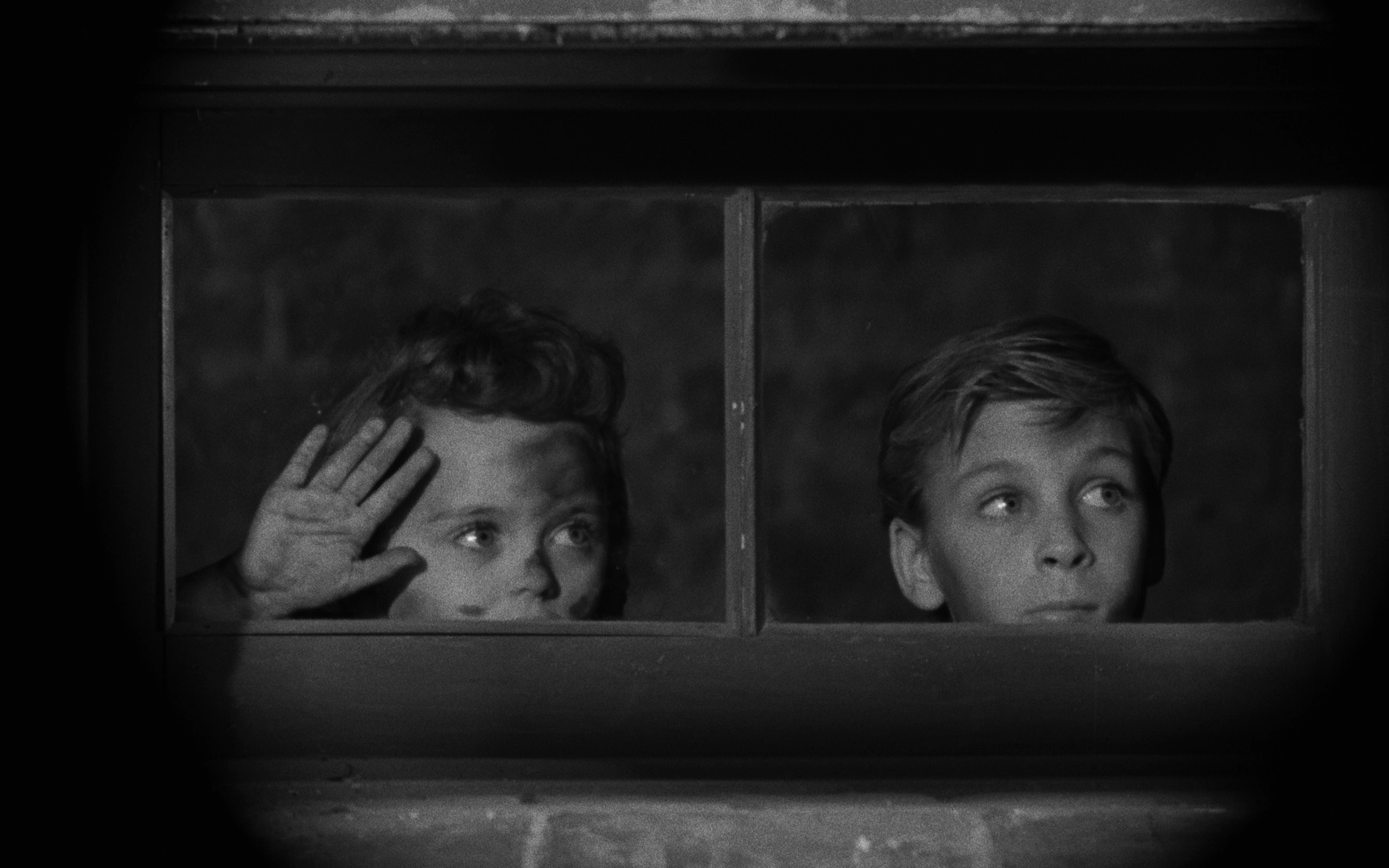
As is my wont, I also must take a moment to steer the conversation regarding the film’s depiction of the Christian faith. Poking around the Internet, you’ll find a surprising number of critics who will hold the film up as some kind of blistering critique of Christianity; as if to suggest that the villainous Harry Powell is a representative Christian, hiding his violent intent behind hymns and smooth talk, and the whole film pivots around ripping that spokesman of the faith to shreds. It should be needless to say—but sadly it’s not—that viewing The Night of the Hunter as an anti-Christian screed is a swing and a miss. Clearly, Powell is a creature of evil. But the entire thrust of the film is how good ultimately overcomes that evil, with Miss Cooper as a paragon of Christian virtue who acts as a kind of righteous avenging angel. Powell may twist the Bible to gain the trust of others, but the fact that people can pull lines of scripture out of context and distort its message to justify a variety of evils isn’t some kind of death blow to the Christian message. Blatant within the text of the film is Powell’s virtuous opposite, who has the law written on her heart and from whom good naturally flows. In many respects it hues closely to a basic fairytale moral, which should be easy enough to comprehend. But it seems like the fact that it explicitly included a corrupt preacher gave axe-grinding critics an angle to do their grinding. In any case, to be abundantly clear, yes, even preachers can fall into patterns of sin. Most of them don’t become serial killers, though. But then again, Powell is never actually shown to be an ordained minister. He’s just a conman good enough to work his game on the unwitting viewer. It takes a certain unrestrained malice toward Christianity to watch this film and ignorantly conclude that Powell—an obvious devil—is somehow a true representative of Christ and Miss Cooper a secular angel.
In his first and only film, Charles Laughton proved that he knew how to identify good source material, produce unique aesthetics, and direct a diverse cast. Regrettably, it was lambasted by critics, audiences were put off, and the studio didn’t go to bat for him. But it’s difficult to shake that haunting impression it leaves on you. I thank those who dutifully rehabilitated its reputation and ensured that later generations could be blessed with Laughton’s undersung masterpiece.
Sources:
Kashner, Sam; McNair, Jennifer. The Bad & The Beautiful: Hollywood in the Fifties. W. W. Norton & Company. 2002.
Algar, Nigel. “Moving Pictures: The Night of the Hunter”. The Night of the Hunter, directed by Charles Laughton, 1955. The Criterion Collection.